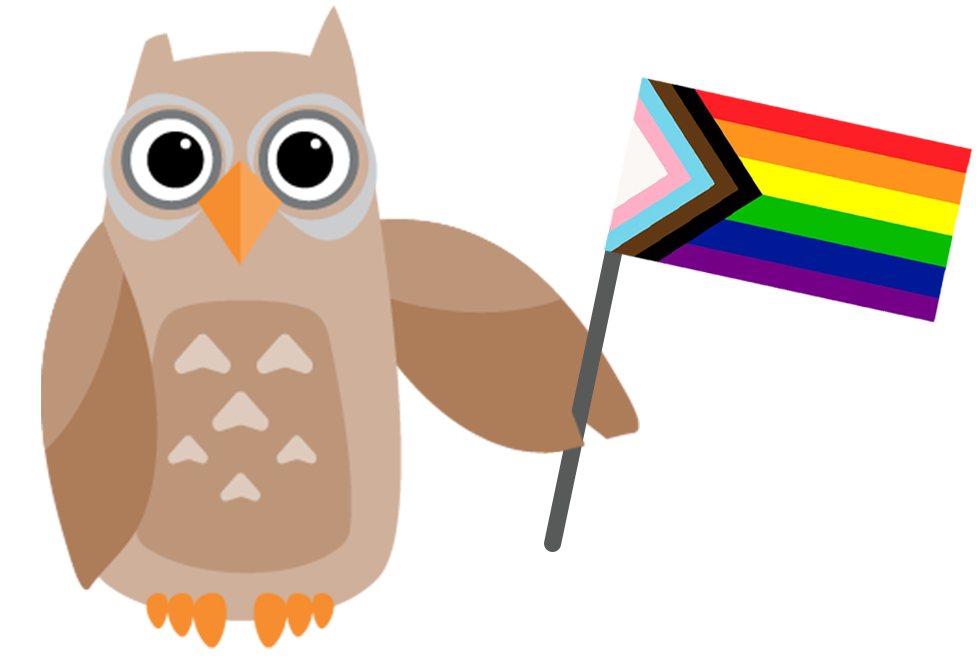2SLGBTQIA+ Resource Collection
Please note that this post will be updated as we receive feedback and learn of new resources.
(Updated June 14, 2021).
Resources for Cultural Institutions
Glossary of Terms
This glossary was written to help give people the words and meanings to help make conversations easier and more comfortable. LGBTQ people use a variety of terms to identify themselves, not all of which are included in this glossary. Always listen for and respect a person’s self identified terminology.
How to Make Your Hiring Practices Accessible
When thinking through workplace diversity, inclusion, and accessibility, museums need to move way beyond just an inclusion statement, as potential candidates need to know that your institution is a safe place to work before they even apply.
An Institution’s Guide: Gender Transition and Transgender Inclusion in the Museum Field
The Institutional Guidelines found here can be used by museum professionals at any level, but, ideally, institutional buy-in for transgender inclusion should come from top levels, including governing authority and executive support.
Webinar: Introduction to Brave Spaces
Museums across the world have recently been creating “safe spaces.” However, safe spaces can be a problematic concept, as they often incorrectly assume that all space can be “safe” to all people in the same way. What is safe for white, ableist individuals may not feel safe for a person of colour, queer, and/or disabled individual. Sometimes, regardless of what a museum does, spaces will never feel safe due to the institution’s founding in colonial history.
LGBTQ2+ Inclusion in Canadian Museums
This is not a ýnal document. It has been reviewed by the CMA LGBTQ2+ Working Group and is currently under community review. The document is intended as an introduction to LGBTQ2+ inclusion for Canadian museums, which will help launch a series of inclusive strategies to help guide cultural institutions on how to engage, reþect, and celebrate diverse Canadian communities.
LGBTQ+ People with Disabilities
The LGBTQ+ community and the disability community intersect in significant ways. Below, you can find articles, books, and other resources on the intersection of Disability and LGBTQ+ issues.
What to Collect? Museums and Lesbian, Gay, Bisexual and Transgender Collecting
This article explores both some of constraints facing museums and the strategies, ethical considerations and curatorial practices they might explore and adopt to reflect and document our rich LGBT histories and heritage in their collections, and to highlight these histories in mainstream and special exhibitions and public programming such as events, talks and conferences hosted by museums.
What makes an object queer? Collecting and exhibiting LGBT stories in regional museums and archives
This paper addresses the question, What makes an object queer? through the context of a regional museum's exhibition about the LGBT experience in the Riverina region of New South Wales, Australia.
How Museums Can Expand Narratives With LGBTQ Interpretation
Susan Ferentinos, Public history researcher, writer and consultant spoke at MuseumNext Indianapolis in September 2015 about ways that museums might begin thinking about expanding their interpretation to include Lesbian, Gay, Bisexual, and Transgender (LGBT) stories.
The Queer-Inclusive Museum
This article will explore queer inclusion in four tiers: programming, temporary exhibitions, interpretive strategy, and broad institutional commitment.
Resources for LGBTQ2+ Identifying Cultural Professionals
LGBTQ+ Alliance
The LGBTQ+ Alliance of the American Alliance of Museums provides a forum for communication and dialogue and is committed to advancing diversity, equity, inclusion, and inquiry with particular respect to sexual orientation and gender identity within museums.
A Transitioning Professional's Guide: Gender Transition and Transgender Inclusion in the Museum Field
The purpose of A Transitioning Professional’s Guide is intended to guide transgender museum professionals through their workplace transitions. There is no one-size-fits-all plan for transitioning, but the guides, sample scripts, and resources included here should help you in planning a workplace transition that fits your unique situation
A Coworkers Guide to Gender Transition and Transgender Inclusion in the Museum Field
The purpose of this document is to prepare museum employees as they work with transitioning colleagues in the workplace
Sher Vancouver Resources
Sher Vancouver strives to provide support through education and outreach to South Asian members of the LGBTQ+ community.
Centre for Queer History
We bring together scholars, activists, and community members to create a global hub for queer history research.
Research Guides from GLBT Historical Society
Guides to archival holdings related to specific topics and tips for researchers preparing to visit the archives.
Resources to make your museum welcoming for LGBTQ2+ visitors
Welcoming Guidelines for Museums
The Welcoming Guidelines are envisioned as a checklist/assessment tool that can be applied by individual LGBTQ museum professionals and allies as a resource to effect change at institutions that serve LGBTQ persons and families.
Queerness in Museums
The Queer Collections Project
The Queer Collections Project is a joint, interdisciplinary initiative organized by faculty in the Faculty of Arts with the support of UBC Library, especially Rare Books and Special Collections.
Queering the Museum
This site functions as an archive of the Project, our collaboration with MOHAI and the LGBTQ work being done in our field. We continue our commitments to bringing queer cultures to museums and diversifying the field in culturally competent ways, in new forms.
Museum Queeries
Museum Queeries prioritizes Two-Spirit, lesbian, gay, bisexual, transgender, transsexual, and queer (2S+LGBTTQ), contributions and interventions into museums and museum studies both as a means of addressing structural exclusions and opening new modes of productive inquiry and activism.
Indigenous LGBTQ2S+ Artists
A list of Indigenous lesbian, gay, bisexual, trans, queer, and two-spirit (LGBTQ2S+) artists that people can financially support or follow. They range from photographers, digital artists, bead-makers, jewelry creators, fashion designers, comic book artists, and so much more.
Resurgence: Indigequeer Identities
How do the lives of 2Spirit people challenge and transcend colonial understanding of gender and sexuality?
Primary Source Sets
Browse sets of primary sources grouped by topic. Great for educators, students and lifelong learners.
 Quick Links:
Quick Links: